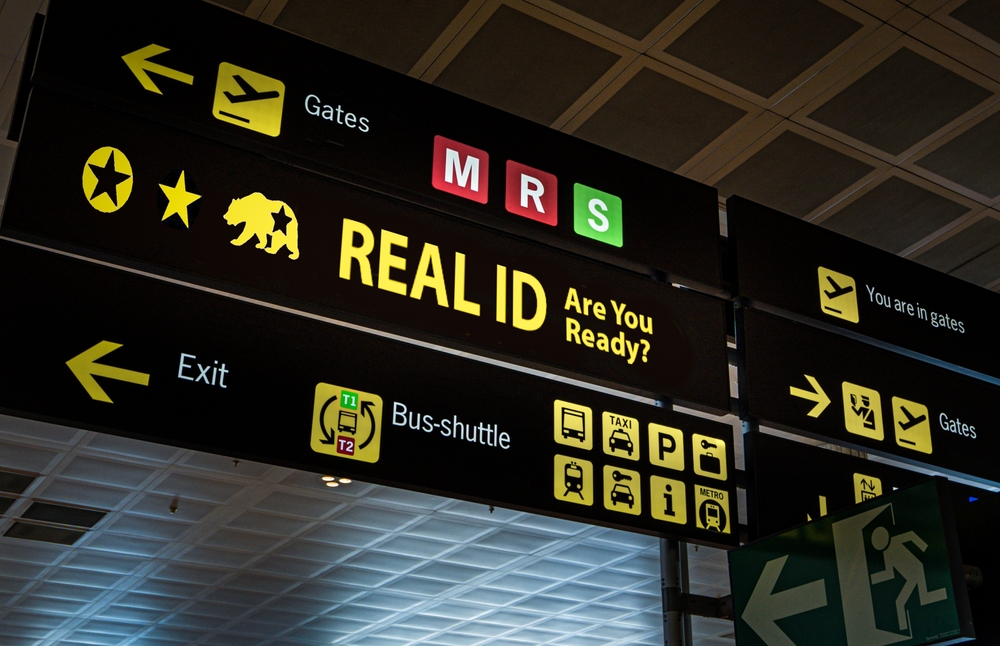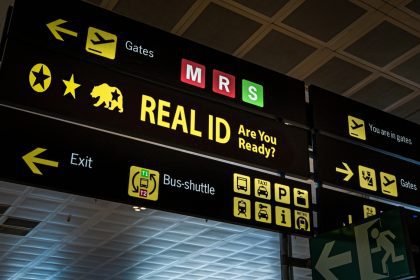The long-delayed Real ID requirement officially takes effect today, May 7, 2025, marking the culmination of a security initiative that began nearly 20 years ago. This federal mandate, which requires enhanced identification documents for domestic air travel and access to certain federal facilities, arrives amid concerns that many Americans remain unprepared for the transition.
Understanding the new identification requirements
The Real ID program establishes uniform security standards for state-issued driver’s licenses and identification cards used for federal purposes. These enhanced documents, typically marked with a star in the upper portion of the card, incorporate additional security features and require more rigorous verification of identity during the application process.
Beginning today, travelers attempting to board domestic flights must present either a Real ID-compliant document or an acceptable alternative such as a passport. The same requirement applies to individuals seeking entry to certain federal facilities or nuclear power plants across the country.
While the implementation occurs today, the origins of this requirement trace back to 2005, when Congress passed the Real ID Act following recommendations from the 9/11 Commission. The legislation aimed to establish minimum security standards for state-issued identification in response to vulnerabilities exposed during the September 11 terrorist attacks.
Transition period for unprepared travelers
Despite the lengthy lead time, Transportation Security Administration data from April indicated approximately 19% of travelers arriving at airports still lacked Real ID-compliant identification. This substantial gap has prompted federal authorities to implement transitional measures to prevent widespread travel disruptions.
Department of Homeland Security Secretary Kristi Noem has indicated that passengers without compliant identification will still be permitted to fly, though they may experience additional screening processes or be directed to separate security lines. The duration of this grace period remains unspecified, suggesting travelers should not delay obtaining compliant identification.
This accommodation reflects practical recognition of the challenges in achieving universal compliance despite multiple deadline extensions over two decades. The most recent delay, which pushed implementation from 2023 to today’s date, represented the final extension granted by federal authorities.
How to identify and obtain compliant documents
Real ID-compliant documents are visually distinguished by a star marking typically located at the top of the card. Some states issue Enhanced IDs, which feature a flag symbol instead of a star but are equally acceptable under the federal requirements.
Travelers can determine their compliance status by examining their current identification documents for these distinguishing features. Many states have been issuing compliant documents for years during regular renewal cycles, meaning some individuals may already possess acceptable identification without realizing it.
Those needing to update their documentation must visit their state’s driver’s licensing agency in person. While the specific requirements vary by state, applicants typically need to present proof of identity, Social Security number, and residency. Despite today’s implementation deadline, state agencies will continue processing Real ID applications indefinitely.
Alternative identification options for travelers
Passengers without Real ID-compliant documents retain several options for domestic air travel. U.S. passports and passport cards serve as acceptable alternatives at TSA checkpoints, regardless of whether the journey crosses international borders. For many frequent international travelers, this may eliminate the immediate need for a Real ID-compliant state document.
Tribal identification cards will also be accepted at security checkpoints, according to information provided by Secretary Noem to lawmakers. The Department of Homeland Security maintains a comprehensive list of acceptable identification alternatives on its website.
One important distinction travelers should note is that while passports can substitute for Real ID during domestic travel, Real ID-compliant state documents cannot replace passports for international travel. These enhanced state IDs remain valid only for domestic air travel and specified federal access purposes.
Impact on federal facilities and other restricted areas
Beyond air travel, the Real ID requirements also affect access to certain federal facilities and nuclear power plants. Visitors to these locations must now present either Real ID-compliant identification or acceptable alternatives to gain entry.
Some federal facilities, particularly those with public services like Social Security offices, may maintain alternative procedures for individuals without compliant identification. However, specific policies vary by facility, and visitors should verify requirements before arrival to avoid access complications.
The implementation particularly affects individuals who regularly access federal buildings for work or other purposes, as they may now need to update their identification documents to maintain seamless entry. Federal contractors and employees working in restricted areas face especially significant impacts from today’s implementation.
Looking forward
While today marks the official implementation date for Real ID requirements, the transitional accommodations suggest a practical approach to enforcement that acknowledges the remaining compliance gaps. Transportation authorities continue emphasizing that the grace period should not deter individuals from obtaining compliant identification as soon as possible.
The Department of Homeland Security has published extensive resources to assist travelers navigating this transition, including detailed FAQs addressing common concerns. These resources provide clarification on exceptional circumstances and special cases that may arise during implementation.
As air travel volumes approach pre-pandemic levels, the success of this transition remains particularly consequential for the transportation sector. Airlines and airports have prepared for potential confusion at security checkpoints, with many incorporating Real ID reminders into their passenger communications in anticipation of today’s deadline.
After twenty years of development, extensions, and public education campaigns, the Real ID program now enters its operational phase, representing one of the most significant changes to domestic travel identification requirements in recent decades.













